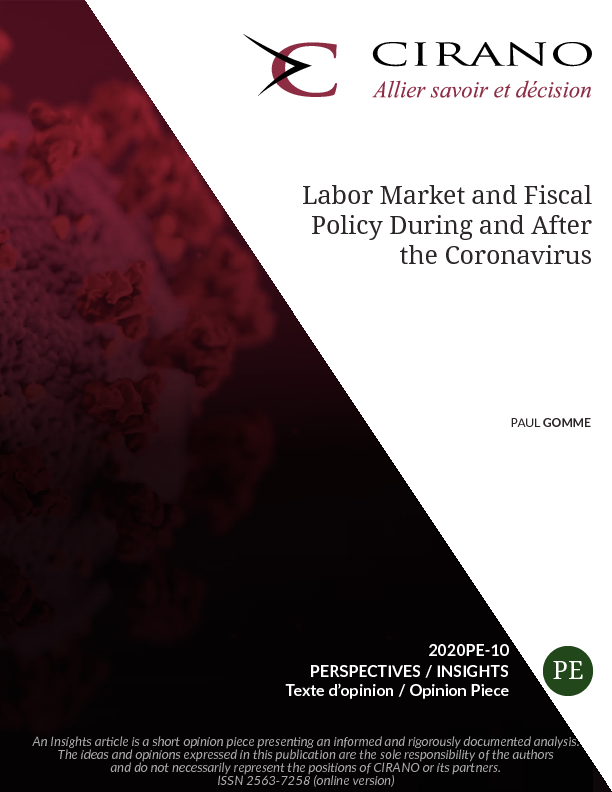Labor Market and Fiscal Policy During and After the Coronavirus
What are the likely effects of coronavirus-related restrictions on the labor market and the macroeconomy? What are the likely effects of government policies on the unemployment rate and output? In a complete working paper published at CIRANO, I develop a model to answer these questions. Labor markets search frictions are captured as follows: Unemployed workers searching for a job, and firm vacancies come together in a matching function that determines the number of new firm-worker pairing. The remainder of the macroeconomy in the model is based on neoclassical foundations.
I feed into this model ‘educated guesses’ for the impact effects of four exogenous shocks; the shocks then dissipate over the 18 months that the coronavirus is likely to directly affect the economy. First, relative to the pre-coronavirus U.S. economy, the job separation probability initially quadrupled. While this is a rather large increase, on impact the job separation probability is not much higher than it was during the Great Recession. These separations are intended to reflect the outcome of lost revenues and the inability of workers to get to work in light of widespread lockdowns. To match the U.S. experience – a immediate and large increase in unemployment – the model simply needs such a large increase in separations. Second, match efficiency falls by 40%, capturing the difficulties workers and firms have in meeting when many firms are closed, and workers are restricted to their homes. Third, vacancy posting costs double. These costs capture a combination of the aforementioned difficulties firms have in recruiting when they are closed, and the inability of firms to obtain financing, some of which is used to pay for the up-front costs of recruiting. Finally, total factor productivity falls by 10%, capturing the loss in productivity of working from home, as well as disruptions to supply chains. By way of comparison, over the Great Recession, total factor productivity fell by 6.5%. When all four shocks are in play, absent a policy response, the outlook is dire: The model predicts that unemployment will peak at over 22.5% and output will fall by over 20%.




